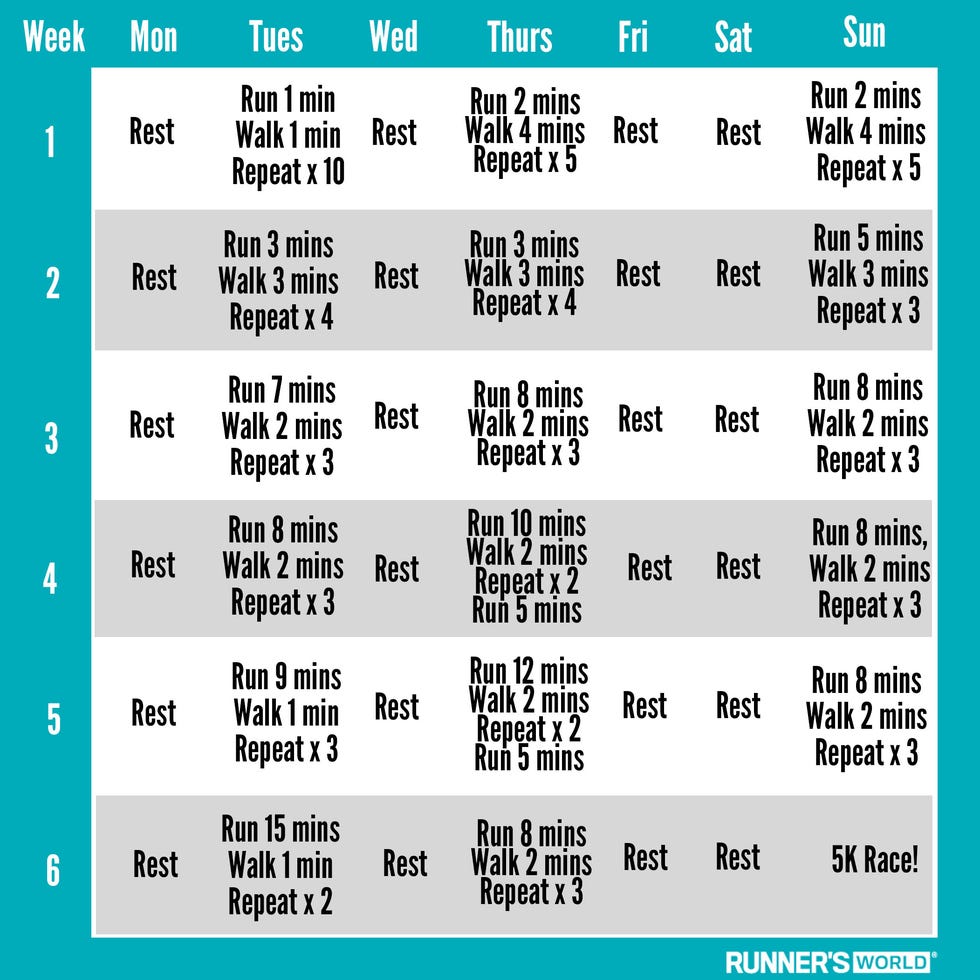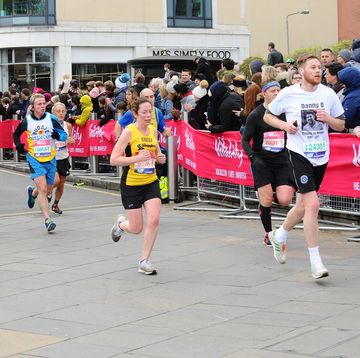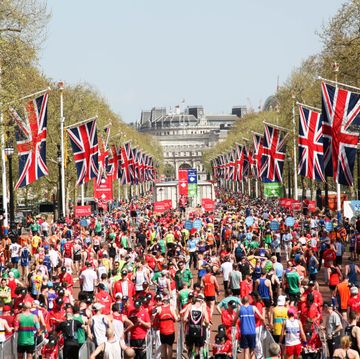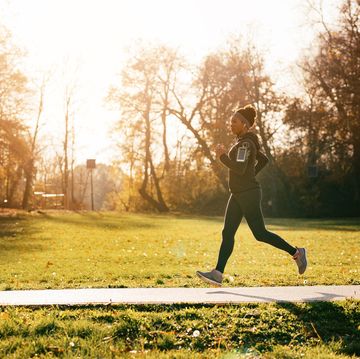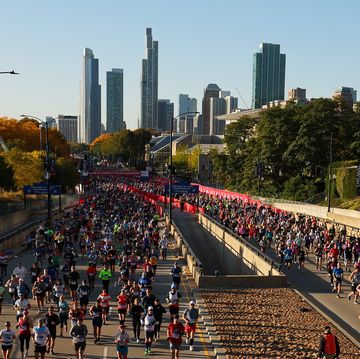Want to run a 5K, but not quite sure where to begin? Whether you're returning to running from injury, or starting from scratch, you’ve come to the right place. Follow our beginner’s training plan below to help build your fitness, taking you from couch to 5K in just six weeks.
This training plan gradually increases the volume during this period, starting with a series of short run-walk intervals.
Why the breaks? Our bodies need time to adapt to running and absorb the impact, so by adding short walking breaks into the sessions, we can gradually build our running volume over time at a safer rate. If you find this too easy, or you’re already used to running for up to 30 minutes a few times a week, take a look at our intermediate 5K training plan instead.
Over the course of six weeks, you will reduce the amount of time spent walking, and increase the amount of time running, until eventually, the walking intervals are non-existent.
Building up to running 5K is a great goal for beginner runners. With Parkrun – the free weekly 5K – available for free in locations across the UK, it's never been easier to test yourself over the distance in a welcoming, inclusive environment.
The history of the Couch to 5K plan
The Couch to 5K training plan, which is perhaps the most famous training programme to get new runners up and running, was originally devised by American Josh Clark in the mid-1990s. He wasn’t even a runner at the time – following a break-up with his partner in his early 20s, he took up the sport, and he’s said in interviews that he found running at first to be ‘punishing and painful’. But then, he says, it started to feel good – ‘physically, mentally and even spiritually’.
During this period, he created a plan to help his mum take up running. He wanted to avoid, what he called in an interview with the BBC, the ‘dreary, horrible ramp-up’ that came with running, and instead introduce it more gently so that people could see the rewards running brings much sooner.
The result was the Couch to 5K plan, which he put on his website in 1996. He says word began to spread, and communities grew who were referencing it's benefits and successes, and by the mid-2000s it was rocketing in popularity. Since then, he estimates tens of millions of people have benefitted from the programme – even the NHS recommends it.
Here’s everything you need to know about going from Couch to 5K
Is it normal to feel pain when you start running?
Some discomfort is normal when you start training, but pain isn’t normal. If something feels so bad that you have to run with a limp or otherwise alter your stride, you’re probably injured. Stop running immediately, and take a few days off. If you’re not sure, try walking for a minute or two to see if the discomfort disappears. If it doesn’t disappear, consult your GP. Contrary to what some people suggest, you cannot ‘run off’ an injury.
What kit do you need?
The great thing about running is how little kit you need to take part. You can get by with basic running clothing – an old T-shirt and shorts or leggings will do. But investing in a pair of decent running shoes will make a huge difference to your progress. You can find cheap running shoes if you shop around, especially in the sales, or if your budget is tight, you can pick up some great second-hand pairs on sites such as eBay. A dedicated pair of running shoes will help absorb impact from the pavement, provide energy return to help you run further and be breathable.
What running shoes are best for beginners?
If you’re new to running, the chances are you’ll be looking to invest in a pair of running shoes that will get you moving (no, those old Converse won't do). The key thing consideration here is comfort; save the carbon plate running shoes for when you're further along your running journey. Check out our round of the best running shoes for beginners.
Do you need to stretch?
Doing some dynamic stretching – that is, stretching on the move not standing still – before a run is a good idea as it will help to prepare the body for the task ahead. But as with all aspects of running, everyone is different, and pre-run stretching works for some but not others, so experiment and see what works for you.
Stretching after running, however, is recommended for all runners as not only does it help release muscle tension but it also aids recovery by increasing blood flow. If you’re not sure where to start, have a look at our beginner's guide to post-run stretching.
Should you cross-train?
Incorporating cross-training into your running plans is a great way of improving all-around fitness and reducing your injury risk. The most popular forms of cross-training include cycling, rowing or swimming – but we advise sticking to what you most enjoy. Why? It adds variety to your training plan and it will also make your running goals easier to adapt if get injured.
Does nutrition matter?
To help your body go from couch to 5K, you’ll need to do the physical training, but it’s also important to make sure you fuel properly and eat a healthy, balanced diet to speed up your recovery time. Aim to keep your protein high, eat plenty of carbs before your longer sessions, and if you’re looking to really push the pace or distance, try experimenting with caffeine, too.
Our beginner 5K training plan:
The best thing you can do to level up your running is to follow – and really stick to – a plan. Our six-week plan, will take from the couch to 5K, tells you what days to run and how your workout is structured. This means you know exactly when you are due to go for a run – and provides both accountability and motivation. Let us know how you get on by tagging @runnersworlduk in your Instagram posts.
On race day: You will probably find that you can run at least 20 minutes before you need a break, but whatever your plan, start slowly and don't wait until you are exhausted before taking some one-minute walk breaks. And, good luck!

